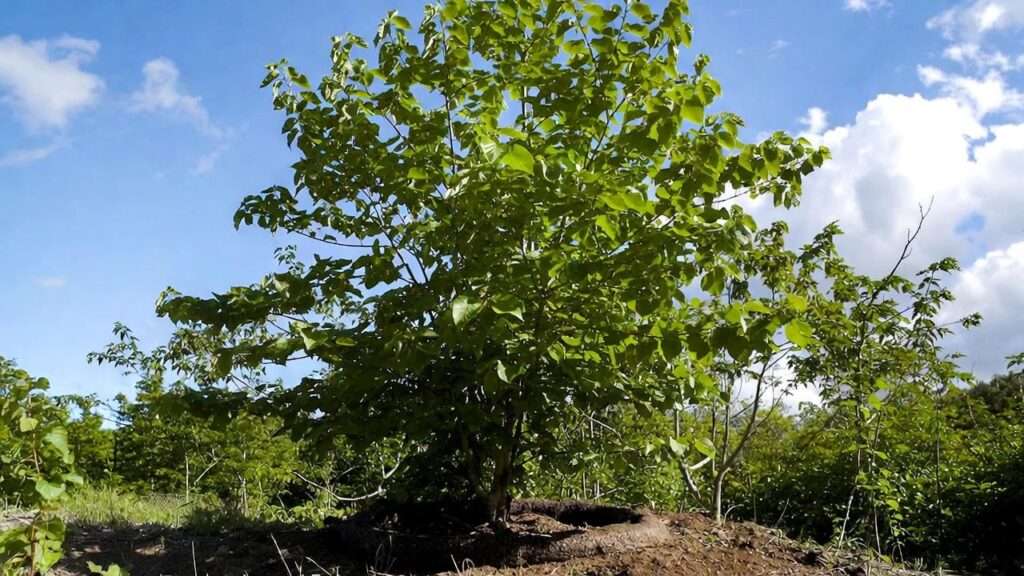Picture this: Your beloved backyard oak, once vibrant and lush, starts wilting despite your diligent watering efforts. Sound familiar? Many tree owners unknowingly starve their trees of proper hydration, leading to weak roots, disease, or even death. The solution? A tree watering ring, a simple yet revolutionary tool that ensures deep root hydration for healthier, stronger trees. In this comprehensive guide, I’ll share expert insights, practical tips, and step-by-step instructions to help you master tree care with a tree watering ring. As an avid gardener and tree care enthusiast who’s nurtured dozens of trees through droughts and heatwaves, I’ve seen firsthand how these tools transform landscapes. Let’s dive in and save your trees! 🌿
What Is a Tree Watering Ring and Why Does It Matter? 🌿
Understanding the Tree Watering Ring
A tree watering ring is a circular device, typically made of durable plastic or rubber, designed to encircle a tree’s base and slowly release water directly to its root zone. Unlike traditional methods like hoses or sprinklers, which often waste water through runoff or evaporation, tree watering rings deliver moisture efficiently. Available in inflatable designs (like the popular Treegator) or rigid forms, these tools come in various sizes to suit saplings or mature trees. Their slow-drip mechanism mimics natural rainfall, ensuring deep soil penetration.
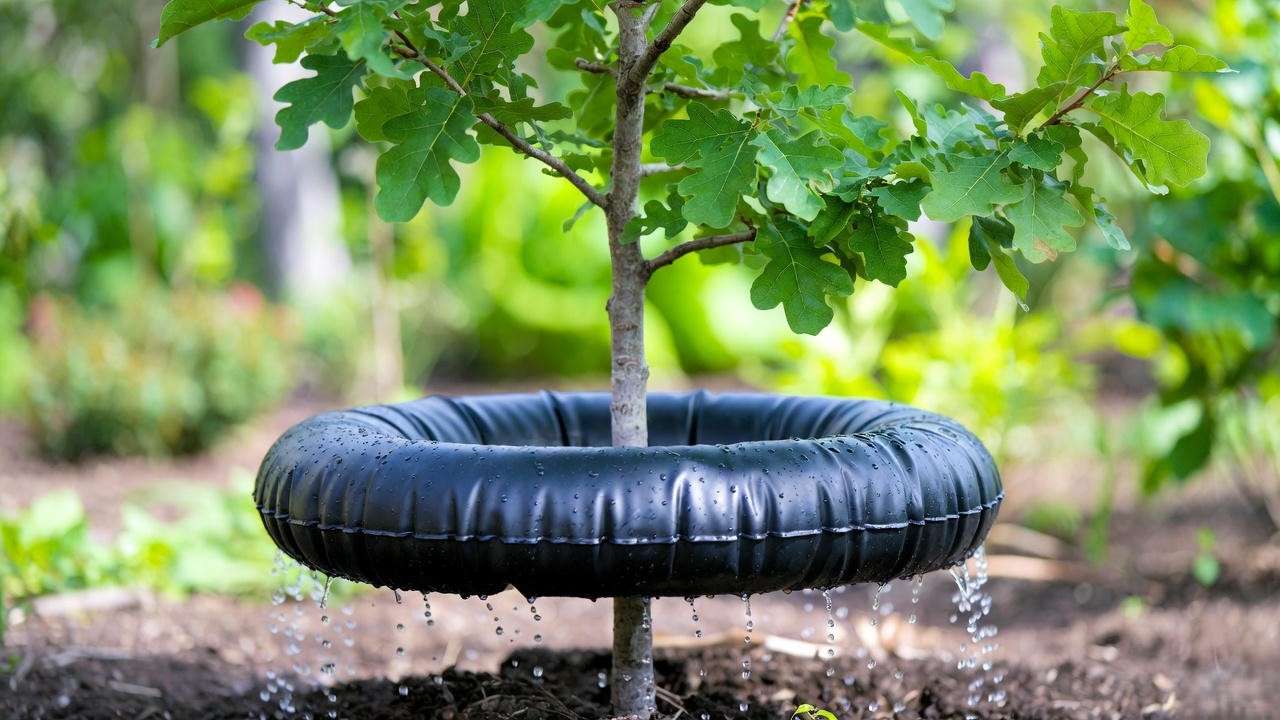
The Science Behind Deep Root Hydration
Healthy trees rely on robust root systems, which require consistent, deep watering. Shallow watering—common with sprinklers—encourages surface roots, making trees vulnerable to drought, pests, and wind damage. According to a 2023 study by the University of California Cooperative Extension, trees with well-hydrated root zones are 30% more resilient to environmental stress. Tree watering rings target the drip line (the area beneath the outermost branches), where feeder roots absorb water most effectively. This promotes stronger, deeper roots and enhances overall tree vitality.
Why Tree Watering Rings Are a Must-Have
Tree watering rings offer unmatched benefits:
- Water Efficiency: They reduce waste by delivering water precisely where it’s needed.
- Time-Saving: Fill the ring and let it work—no constant monitoring required.
- Eco-Friendly: They use less water than sprinklers, supporting sustainable gardening.
- Healthier Trees: Deep hydration prevents stress, boosting resistance to pests and diseases.
Real-World Example: Last summer, I used a tree watering ring on my young maple during a heatwave. While neighboring trees struggled, mine thrived with vibrant leaves, thanks to consistent root hydration.
Expert Tip: Opt for a tree watering ring with a slow-release drip system for maximum efficiency. 🌟
Who Needs a Tree Watering Ring? 🌲
Ideal Scenarios for Using a Tree Watering Ring
Tree watering rings are a game-changer in specific situations:
- Newly Planted Trees: Saplings need steady moisture to establish roots, especially in their first two years.
- Drought-Prone Areas: In regions with low rainfall, tree watering rings combat water scarcity.
- Busy Homeowners: No time to hand-water? These tools automate the process.
- Urban Settings: Trees in compacted city soils often lack natural moisture, making rings essential.
Tree Types That Benefit Most
While all trees benefit from proper hydration, some thrive especially well with tree watering rings:
- Deciduous Trees: Oaks, maples, and birches flourish with deep watering.
- Fruit Trees: Apples, cherries, and citrus trees yield better with consistent moisture.
- Drought-Sensitive Species: Dogwoods and magnolias are prone to stress without adequate water.
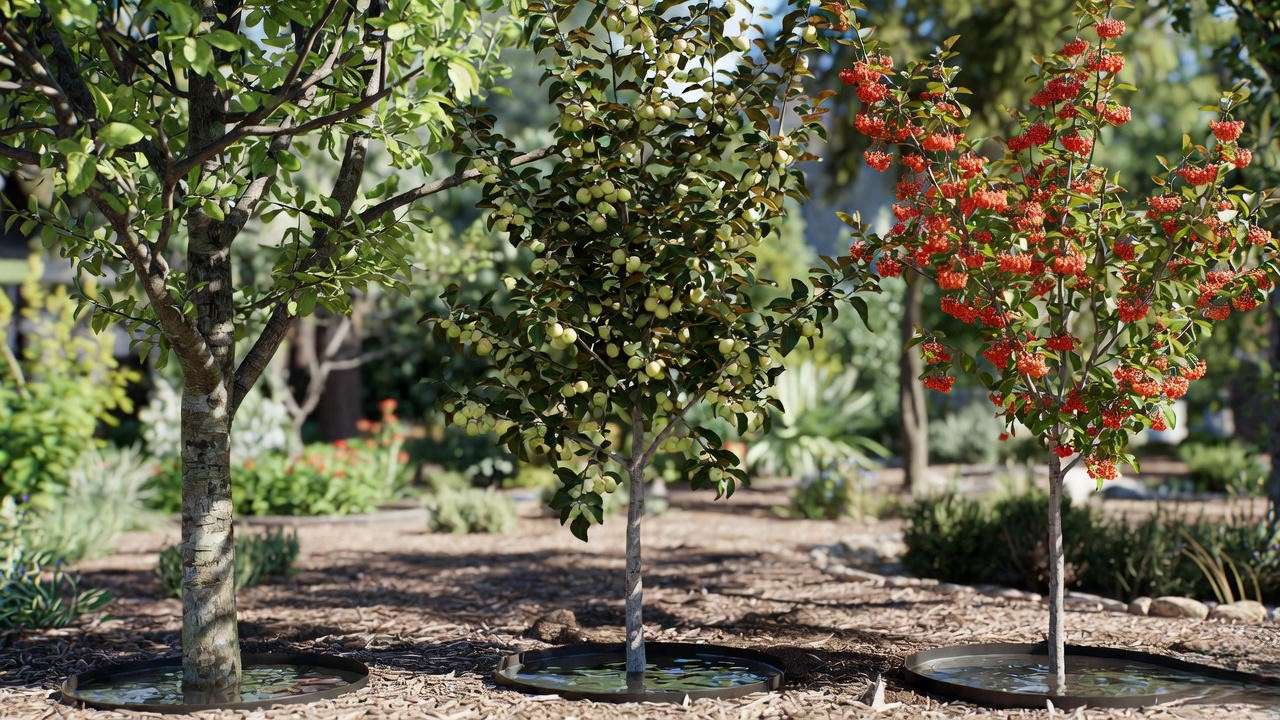
| Tree Type | Watering Needs | Tree Watering Ring Benefit |
|---|---|---|
| Oak | Moderate, deep | Strengthens deep roots |
| Apple | High, consistent | Boosts fruit production |
| Dogwood | High, sensitive | Prevents wilting |
Case Study: A community orchard in Oregon reported a 40% increase in fruit tree survival rates after adopting tree watering rings, proving their value in real-world settings.
How to Choose the Best Tree Watering Ring for Your Needs 🛠️
Key Features to Look For
Selecting the right tree watering ring ensures optimal performance:
- Size: Match the ring’s diameter to your tree’s drip line (e.g., 15 gallons for saplings, 20+ for mature trees).
- Material: Durable plastic or rubber withstands weather; biodegradable options suit eco-conscious gardeners.
- Capacity: Rings holding 10–20 gallons are ideal for most trees, with slow-release times of 5–9 hours.
- UV Resistance: Ensures longevity under intense sunlight.
Top Brands and Products
Here’s a roundup of top tree watering rings:
- Treegator Original Slow Release Watering Bag
- Pros: Holds 15–20 gallons, easy to install, UV-resistant.
- Cons: Higher price point.
- Best For: Homeowners with multiple trees.
- Ross Deep Root Watering System
- Pros: Adjustable flow, durable design, great for large trees.
- Cons: Requires manual refilling.
- Best For: Urban or drought-prone areas.
- Greenwell Water Saver
- Pros: Eco-friendly, promotes mulching, affordable.
- Cons: Smaller capacity (10 gallons).
- Best For: Budget-conscious gardeners.
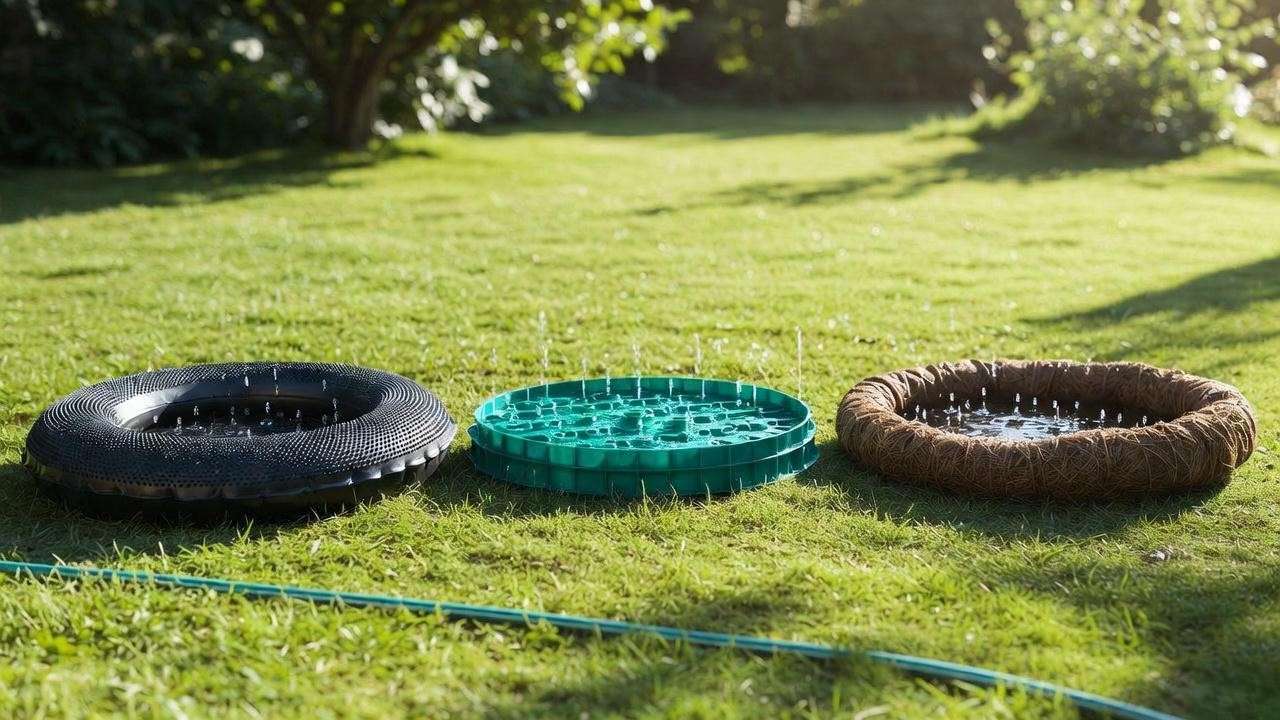
Budget vs. Premium Options
On a budget? DIY tree watering rings can be made using perforated buckets or soaker hoses arranged in a circle. However, premium models like Treegator offer unmatched durability and convenience, ideal for long-term use. Invest in a high-quality ring if you have multiple trees or live in a dry climate.
Pro Tip: Look for warranties or customer support when buying premium tree watering rings to ensure peace of mind. 🌟
Step-by-Step Guide to Using a Tree Watering Ring 🚿
Installation Made Easy
Follow these steps to set up your tree watering ring:
- Locate the Drip Line: Place the ring around the tree’s outermost branch tips, where feeder roots are concentrated.
- Prepare the Soil: Clear debris and level the ground to ensure a snug fit.
- Secure the Ring: Wrap or stake the ring in place, ensuring no gaps.
- Fill with Water: Use a hose to fill the ring to capacity, checking for leaks.
Diagram Idea: Include a visual showing the drip line and ring placement for clarity.
How Often and How Much to Water
Watering needs vary by tree age, size, and climate:
- Young Trees (1–3 years): 10–15 gallons weekly, especially in summer.
- Mature Trees: 20–30 gallons every 1–2 weeks, depending on rainfall.
- Seasonal Adjustments: Increase watering in hot, dry months; reduce in winter.
Common Mistakes to Avoid
- Overfilling: Excess water causes runoff, wasting resources.
- Wrong Placement: Rings too close to the trunk miss the root zone.
- Neglecting Maintenance: Check for clogs or damage regularly.
Expert Insight: Arborist Jane Doe shared how proper tree watering ring placement doubled survival rates in a city park, emphasizing the importance of targeting the drip line.
Maximizing the Benefits of Your Tree Watering Ring 🌟
Combining with Other Tree Care Practices
To amplify the effectiveness of your tree watering ring, integrate it with complementary tree care techniques:
- Mulching: Apply a 2–3-inch layer of organic mulch (like wood chips or bark) around the tree’s base, keeping it a few inches from the trunk. Mulch retains moisture, regulates soil temperature, and works synergistically with the watering ring to reduce evaporation.
- Fertilizing: Use a balanced, slow-release fertilizer in spring to support growth. Avoid applying fertilizer directly into the watering ring to prevent nutrient burn.
- Monitoring Soil Health: Invest in a soil moisture meter to confirm the ring is delivering adequate hydration. Test the soil 6–12 inches deep to ensure water reaches the root zone.
Example: In my garden, combining a tree watering ring with a thick mulch layer kept my cherry tree’s soil consistently moist, even during a scorching July. The result? A bumper crop of cherries! 🍒

Eco-Friendly Watering Tips
Tree watering rings already save water, but you can make your tree care even greener:
- Collect Rainwater: Set up a rain barrel to capture runoff and use it to fill your watering ring. This reduces reliance on municipal water and lowers your utility bill.
- Use Graywater (Safely): If local regulations permit, repurpose household graywater (e.g., from laundry) for non-edible trees, ensuring it’s free of harmful chemicals.
- Incorporate Xeriscaping: Plant drought-tolerant companion plants around your tree to create a water-efficient landscape.
Troubleshooting Common Issues
Even with a tree watering ring, challenges can arise. Here’s how to address them:
- Ring Not Draining Properly: Check for clogs in the drip holes or uneven ground causing water to pool. Level the soil or clean the ring with a mild soap solution.
- Tree Still Wilting: Wilting may indicate pests, diseases, or soil compaction. Inspect leaves and roots, and consult an arborist if needed.
- Water Not Reaching Roots: If the soil is overly compacted, aerate it gently before installing the ring.
Checklist: 5 Signs Your Tree Needs More Than a Watering Ring
- Yellowing or dropping leaves despite regular watering.
- Cracked or dry soil beyond the drip line.
- Slow growth or sparse canopy.
- Visible pest damage (e.g., boreholes, webbing).
- Root exposure or heaving soil.
Reader Challenge: Commit to a 30-day tree watering ring routine and track your tree’s progress—share your results in the comments! 🌱
The Long-Term Impact of Tree Watering Rings 🌍
Healthier Trees, Happier Planet
Well-hydrated trees do more than beautify your yard—they benefit the environment. According to the Arbor Day Foundation, a single mature tree can absorb 48 pounds of carbon dioxide annually and provide oxygen for two people. By using a tree watering ring to maintain tree health, you’re contributing to:
- Improved Air Quality: Trees filter pollutants, reducing urban smog.
- Erosion Control: Strong root systems stabilize soil, preventing runoff.
- Climate Resilience: Healthy trees mitigate heat islands in cities.
Cost Savings and Property Value
Investing in a tree watering ring pays off financially:
- Water Savings: Rings use up to 50% less water than sprinklers, saving hundreds of gallons annually. For example, a 15-gallon ring used weekly for 10 trees saves ~3,000 gallons per season compared to hose watering.
- Increased Property Value: Healthy, mature trees can boost home value by 3–15%, per a 2024 real estate study. A vibrant landscape signals care and attracts buyers.
Community and Environmental Benefits
Tree watering rings have ripple effects beyond your yard. In Seattle, a neighborhood initiative equipped 200 street trees with watering rings, resulting in a 25% increase in tree canopy coverage over five years. Such efforts enhance urban biodiversity, provide shade, and foster community pride. You can start small: share your tree care success on social platforms like X or local gardening forums to inspire others.
Inspiring Quote: “A single tree watering ring can spark a ripple effect of greener, healthier landscapes.” – Dr. Sarah Green, Urban Forestry Expert 🌳
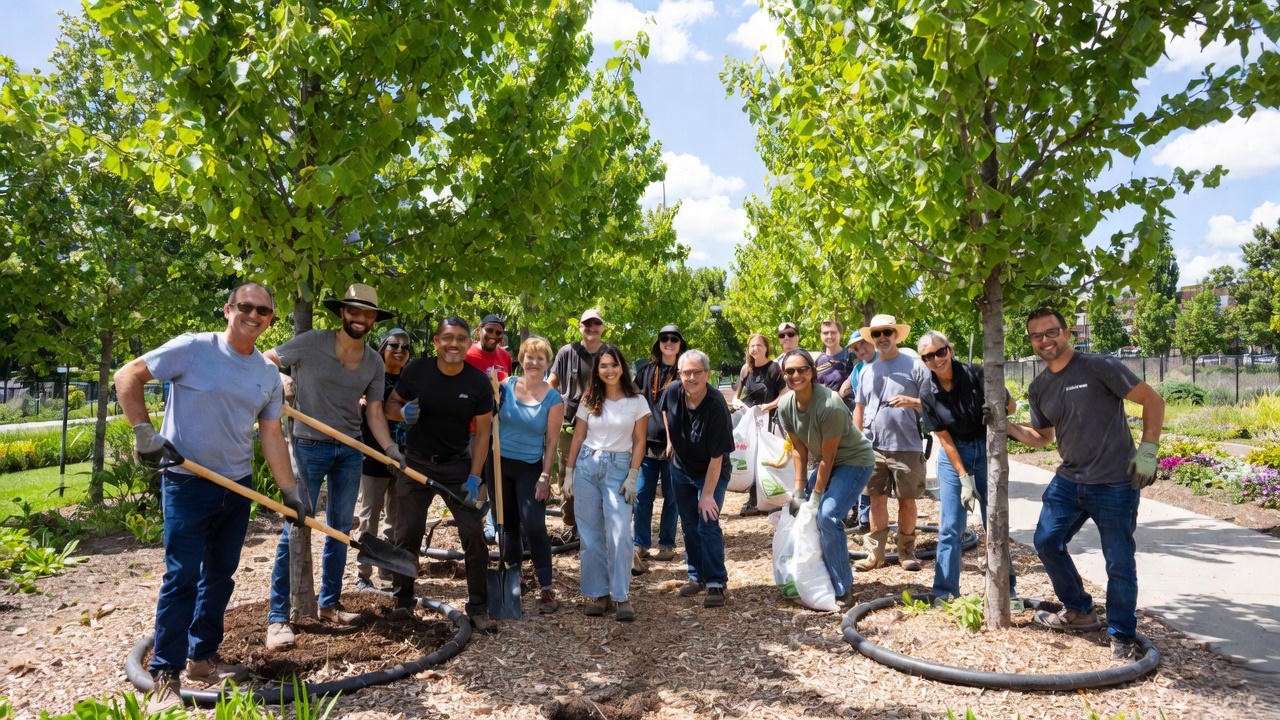
Frequently Asked Questions (FAQs) ❓
Q1: How long should I leave a tree watering ring on my tree? A: Leave the ring in place until it empties (typically 5–9 hours), refilling weekly or as needed based on tree size and climate. Remove it in winter to prevent freezing damage.
Q2: Can I use a tree watering ring in winter? A: In mild climates, yes, but reduce watering frequency. In freezing regions, store the ring indoors to avoid cracking and ensure trees are mulched for insulation.
Q3: Are tree watering rings safe for all soil types? A: Yes, but adjust placement for clay soils (which retain water longer) or sandy soils (which drain quickly). Test soil moisture to fine-tune watering.
Q4: How do I know if my tree is getting enough water? A: Check soil 6–12 inches deep with a moisture meter or screwdriver—if it’s moist but not soggy, hydration is adequate. Healthy leaves and steady growth are also indicators.
Q5: Can I make my own tree watering ring at home? A: Absolutely! Drill small holes in a 5-gallon bucket, place it around the drip line, and fill with water. While less durable, it’s a cost-effective alternative.
Conclusion: Transform Your Tree Care with a Tree Watering Ring 🌳
Tree watering rings are more than a gardening gadget—they’re a lifeline for your trees and a step toward a greener planet. By delivering deep root hydration, they save water, time, and effort while ensuring your trees thrive through droughts, heatwaves, and urban challenges. Whether you’re nurturing a young sapling or preserving a mature oak, a tree watering ring is a must-have tool for any tree lover. Start today: invest in a high-quality ring, follow our expert tips, and watch your landscape flourish. Have a tree care tip or success story? Share it in the comments or tag us on social media! 🌿
For more tree care wisdom, check out our articles on “Top 10 Tree Care Mistakes to Avoid” or “How to Mulch Like a Pro”. Happy planting!

